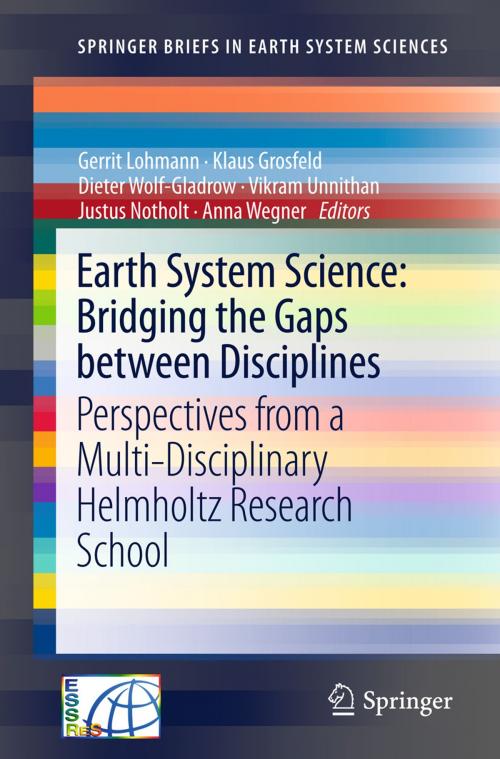Earth System Science: Bridging the Gaps between Disciplines
Perspectives from a Multi-Disciplinary Helmholtz Research School
Nonfiction, Science & Nature, Science, Earth Sciences, Reference & Language, Education & Teaching, Administration| Author: | ISBN: | 9783642322358 | |
| Publisher: | Springer Berlin Heidelberg | Publication: | November 6, 2012 |
| Imprint: | Springer | Language: | English |
| Author: | |
| ISBN: | 9783642322358 |
| Publisher: | Springer Berlin Heidelberg |
| Publication: | November 6, 2012 |
| Imprint: | Springer |
| Language: | English |
Earth system science is traditionally split into various disciplines (Geology, Physics, Meteorology, Oceanography, Biology etc.) and several sub-disciplines. Overall, the diversity of expertise provides a solid base for interdisciplinary research. However, gaining holistic insights into the Earth system requires the integration of observations, paleoclimate data, analysis tools and modeling. These different approaches of Earth system science are rooted in various disciplines that cut across a broad range of timescales. It is, therefore, necessary to link these disciplines at a relatively early stage in PhD programs. The linking of ‘data and modeling’, as it is the special emphasis in our graduate school, enables graduate students from a variety of disciplines to cooperate and exchange views on the common theme of Earth system science, which leads to a better understanding of processes within a global context.
Earth system science is traditionally split into various disciplines (Geology, Physics, Meteorology, Oceanography, Biology etc.) and several sub-disciplines. Overall, the diversity of expertise provides a solid base for interdisciplinary research. However, gaining holistic insights into the Earth system requires the integration of observations, paleoclimate data, analysis tools and modeling. These different approaches of Earth system science are rooted in various disciplines that cut across a broad range of timescales. It is, therefore, necessary to link these disciplines at a relatively early stage in PhD programs. The linking of ‘data and modeling’, as it is the special emphasis in our graduate school, enables graduate students from a variety of disciplines to cooperate and exchange views on the common theme of Earth system science, which leads to a better understanding of processes within a global context.















